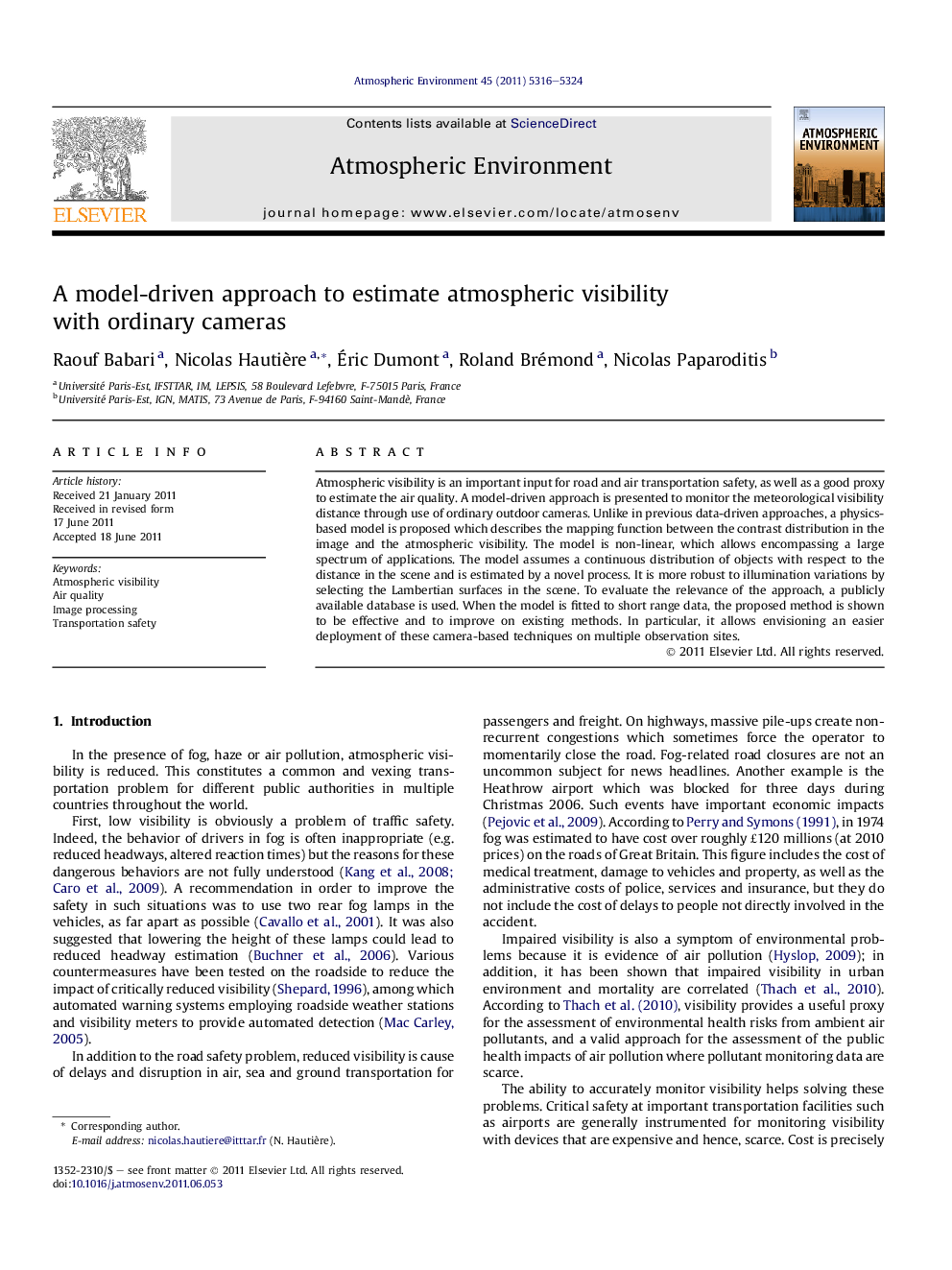| کد مقاله | کد نشریه | سال انتشار | مقاله انگلیسی | نسخه تمام متن |
|---|---|---|---|---|
| 4439442 | 1311019 | 2011 | 9 صفحه PDF | دانلود رایگان |

Atmospheric visibility is an important input for road and air transportation safety, as well as a good proxy to estimate the air quality. A model-driven approach is presented to monitor the meteorological visibility distance through use of ordinary outdoor cameras. Unlike in previous data-driven approaches, a physics-based model is proposed which describes the mapping function between the contrast distribution in the image and the atmospheric visibility. The model is non-linear, which allows encompassing a large spectrum of applications. The model assumes a continuous distribution of objects with respect to the distance in the scene and is estimated by a novel process. It is more robust to illumination variations by selecting the Lambertian surfaces in the scene. To evaluate the relevance of the approach, a publicly available database is used. When the model is fitted to short range data, the proposed method is shown to be effective and to improve on existing methods. In particular, it allows envisioning an easier deployment of these camera-based techniques on multiple observation sites.
► A model-driven approach to monitor atmospheric visibility distance by camera.
► A method robust to illumination variations by selecting the Lambertian surfaces.
► A physics-based model which maps the contrast and the atmospheric visibility.
► A novel data fitting process limited to a reliable subset of the data.
Journal: Atmospheric Environment - Volume 45, Issue 30, September 2011, Pages 5316–5324